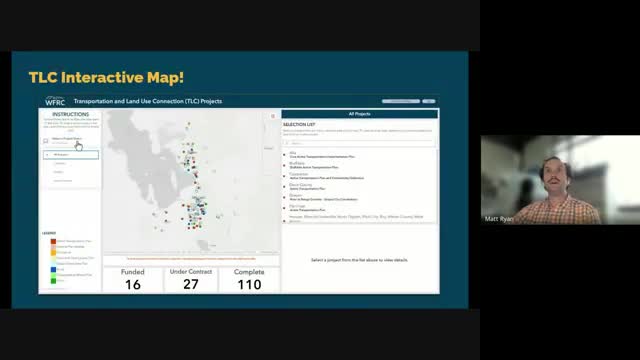Utah officials unveil new Bikeways app and interactive map for cyclists
April 17, 2025 | Regional Growth Technical Advisory Committee (TAC) Ogden-Layton, Wasatch Front Regional Council, Utah Lobbyist / NGO, Utah Legislative Branch, Utah
Thanks to Excel Chiropractic and Scribe from Workplace AI , all articles about Utah are free for you to enjoy throughout 2025!

This article was created by AI using a video recording of the meeting. It summarizes the key points discussed, but for full details and context, please refer to the video of the full meeting. Link to Full Meeting
One of the standout presentations was by Matt, who showcased a new interactive TLC project map developed in collaboration with Sarah Wallace from the Wasatch Front Regional Council (WFRC). This tool allows users to explore various aspects of TLC projects, including project status, costs, and final plans. The map aims to inspire local cities to consider how they can benefit from similar projects.

Before you scroll further...
Get access to the words and decisions of your elected officials for free!
Subscribe for FreeFollowing this, the committee discussed updates on bike facilities. Jory presented a new web map designed to share information about existing bike infrastructure across the region. This initiative aims to improve data sharing among cities and enhance public access to biking resources. The new app, bikeways.utah.gov, is set to launch in May, coinciding with Bike Month. It will feature interactive maps that allow users to view bike routes, traffic stress levels, and provide feedback on the infrastructure.
Additionally, the meeting addressed the significance of the Generalized Future Land Use (GFLU) data layer, which is crucial for regional household and job forecasting. This data helps in understanding land use capacities and informs transportation planning. The committee plans to release preliminary forecasts in the fall, emphasizing the importance of accurate and updated land use data for effective regional planning.
In conclusion, the meeting underscored the collaborative efforts of various stakeholders in Utah to enhance transportation and land use planning. The introduction of new tools and data resources aims to foster better community engagement and informed decision-making in regional development.
Converted from Regional Growth Technical Advisory Committee (TAC) Ogden-Layton | April 16, 2025 meeting on April 17, 2025
Link to Full Meeting
Comments
View full meeting
This article is based on a recent meeting—watch the full video and explore the complete transcript for deeper insights into the discussion.
View full meeting





